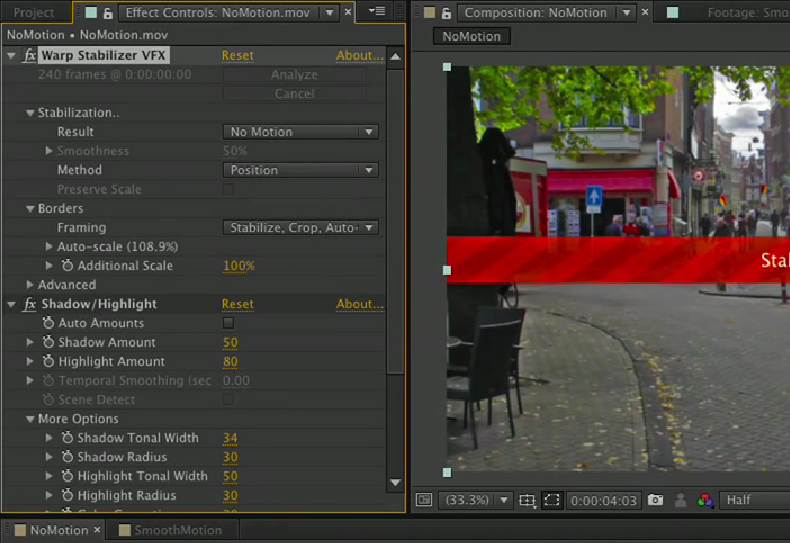
- #Warp stabilizer analyzing slow for free#
- #Warp stabilizer analyzing slow update#
- #Warp stabilizer analyzing slow full#
- #Warp stabilizer analyzing slow pro#
- #Warp stabilizer analyzing slow software#
“720p / 1080i”) refers to whether the frames are interlaced or progressive. The “P” versus “I” designation after the frame size value (e.g. But what about for video? Interlaced vs Progressive For example, the Canon 5D Mark IV has a sensor that is 36mm x 24mm and can produce RAW still images that are 6720 x 4480 pixels, or ~31 megapixels. Each camera records information across either all or part of its sensor, the entirety of which corresponds to the maximum amount of pixels from which a camera can record information.
#Warp stabilizer analyzing slow full#
Modern digital camera sensors can produce video in a bunch of frame sizes, allowing the artist to choose either full frame (in the still photography sense), Super 35 (which is considered “full frame” in the motion picture world but is considered “cropped” in the photography world), or some other cropped output. Let’s start with the fundamentals: what size frame video are you shooting and at what frame rate? Video Frame Sizes, Resolutions, and Frame Rates for Beginners What is an artist to do? There are numbers and abbreviations everywhere! Fear not – we will tackle these issues one at a time and remove the fear. Size also matters, as video can be shot in a variety of resolutions: HD (720), Full HD (1080), and up into 4K, 8K and beyond. Video frames can be “P” (progressive) or “I” (interlaced). For example, video is recorded at many different frame rates, including 24.976, 29.97, and 60 frames per second (FPS). The world of video tech has a bunch of important numerical properties that can be overwhelming. As my career has steered more toward motion over the years, I’ve begrudgingly tried to understand the many properties of video technology – which involves a bit of math.
#Warp stabilizer analyzing slow pro#
What do you think about this Adobe Premiere Pro version 14.One of the things I freely admit is that I am afraid of/confused by the math used in digital video.
#Warp stabilizer analyzing slow for free#
#Warp stabilizer analyzing slow update#
Image credit: Adobe Adobe Premiere Rush 1.5.50 ReleasedĪdobe also released an update for Premiere Rush version 1.5.50 that includes a couple of new features for desktop, iOS, and Android users: You got it, no significant change, but it’s great to see Adobe releasing updates that solve known issues.

Fixed issue where Extensions were displayed as greyed out.Fixed issue with contextual menus and Track resizing when renaming tracks.Improved stability when sending sequence with Essential Sound Panel effects to AU.Fixed issue with rolling edits when rulers are displayed in the Program Monitor.Fixed issue with Durations when setting minimum values in the Essential Sound panel.

#Warp stabilizer analyzing slow software#
But, it looks like Adobe is starting to solve and improve its software very fast, with close to a new version every month. Let’s take a closer look at it!įor a long time, Adobe Premiere Pro performance (and crashes) has been a huge source of complaints from filmmakers, myself included.

Adobe has just released a new Adobe Premiere Pro version 14.9 “performance” update that includes 20 to 80% faster audio rendering performance improvement, as well as faster exports for H264 and HEVC files on macOS.


 0 kommentar(er)
0 kommentar(er)
